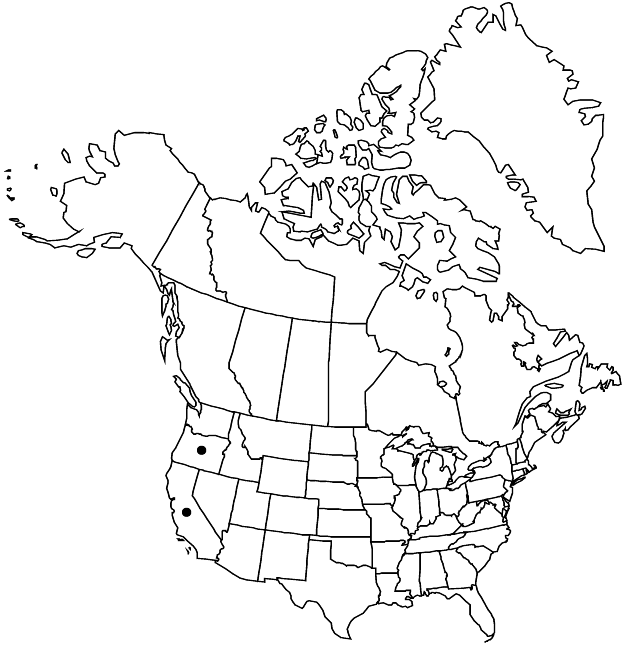Eriogonum pendulum
Proc. Amer. Acad. Arts 23: 265. 1888.
Shrubs, erect or slightly spreading, not scapose, 2–5 × 2–8 dm, densely tomentose, tannish. Stems mostly erect, without persistent leaf-bases, up to 1/2 height or more of plant; caudex stems absent; aerial flowering-stems erect, stout, solid, not fistulose, 2–4 dm, tomentose. Leaves 1 per node and sheathing up stems or fasciculate at tips of basal branches; petiole 0.1–0.5 (–1) cm, tomentose; blade oblanceolate to narrowly oblong, (1.5–) 2–4 (–5) × 1–2.5 (–3) cm, densely white-tomentose abaxially, floccose adaxially, margins plane. Inflorescences cymose, 15–30 (–40) × 15–40 cm; branches dichotomous, tomentose; bracts 3, semileaflike, narrowly oblanceolate, 3–7 × 1–3 mm. Peduncles absent or erect, slender, (1–) 3–10 cm, tomentose. Involucres 1 per node, turbinate-campanulate, 3.5–5 × 2.5–4 mm, tomentose; teeth 5–8, erect, 0.4–0.8 mm. Flowers 3–6 (–7) mm; perianth white, densely villous abaxially; tepals connate proximal 1/3, monomorphic, narrowly oblong; stamens exserted, 3–7 mm; filaments pilose proximally. Achenes brown, 3–5 mm, villous.
Phenology: Flowering Jul–Sep.
Habitat: Sandy to gravelly flats and slopes, sagebrush communities, oak and montane conifer woodlands
Elevation: 200-800 m
Discussion
Eriogonum pendulum is a rare to locally uncommon shrub in the O’Brien-Waldo area of Josephine County, Oregon, and more common in the Siskiyou Mountains of Del Norte County, California, as far south as Gasquet.
Selected References
None.
Lower Taxa
"dm" is not declared as a valid unit of measurement for this property."dm" is not declared as a valid unit of measurement for this property.
